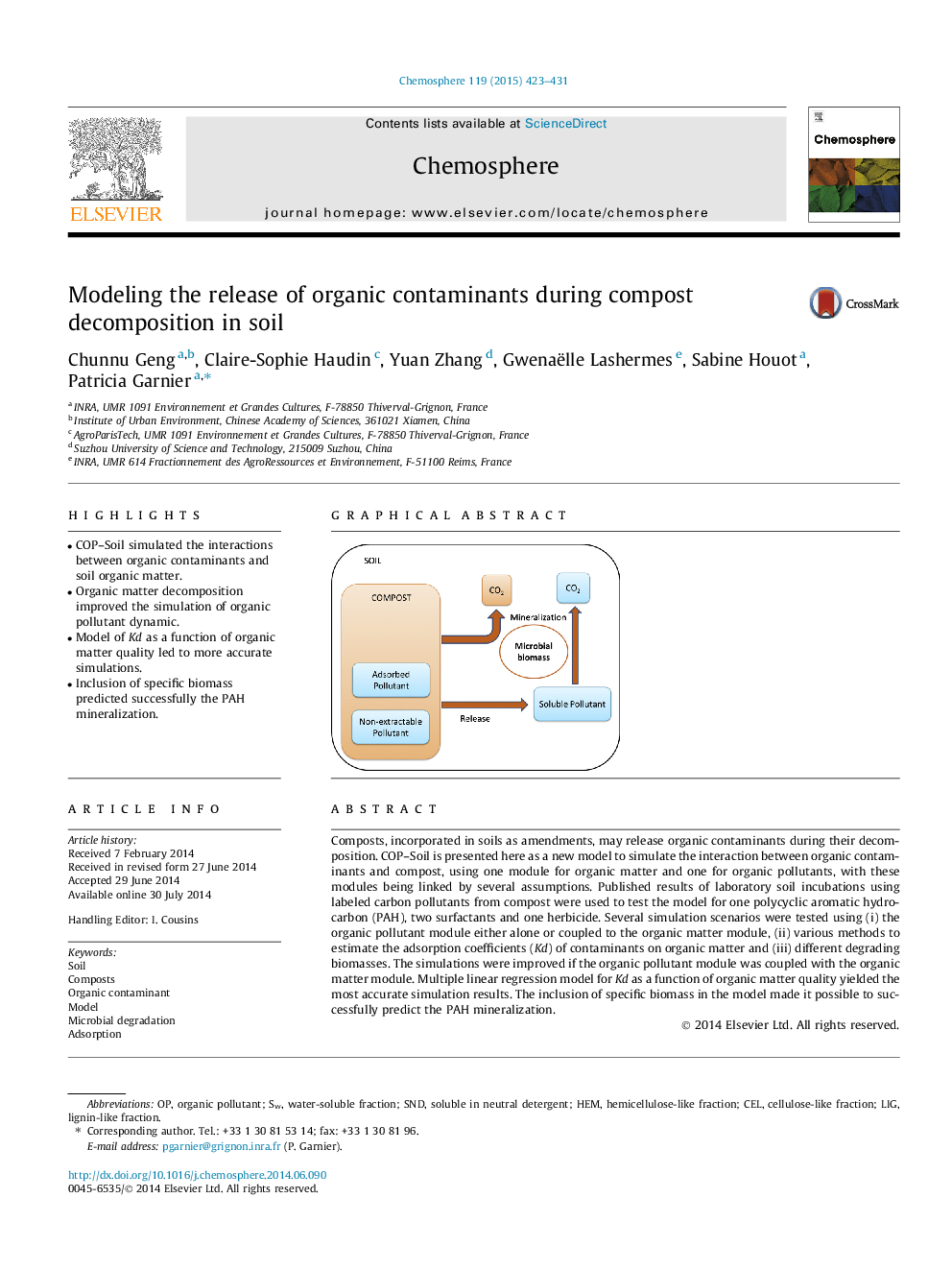| کد مقاله | کد نشریه | سال انتشار | مقاله انگلیسی | نسخه تمام متن |
|---|---|---|---|---|
| 4408650 | 1618852 | 2015 | 9 صفحه PDF | دانلود رایگان |
• COP–Soil simulated the interactions between organic contaminants and soil organic matter.
• Organic matter decomposition improved the simulation of organic pollutant dynamic.
• Model of Kd as a function of organic matter quality led to more accurate simulations.
• Inclusion of specific biomass predicted successfully the PAH mineralization.
Composts, incorporated in soils as amendments, may release organic contaminants during their decomposition. COP–Soil is presented here as a new model to simulate the interaction between organic contaminants and compost, using one module for organic matter and one for organic pollutants, with these modules being linked by several assumptions. Published results of laboratory soil incubations using labeled carbon pollutants from compost were used to test the model for one polycyclic aromatic hydrocarbon (PAH), two surfactants and one herbicide. Several simulation scenarios were tested using (i) the organic pollutant module either alone or coupled to the organic matter module, (ii) various methods to estimate the adsorption coefficients (Kd) of contaminants on organic matter and (iii) different degrading biomasses. The simulations were improved if the organic pollutant module was coupled with the organic matter module. Multiple linear regression model for Kd as a function of organic matter quality yielded the most accurate simulation results. The inclusion of specific biomass in the model made it possible to successfully predict the PAH mineralization.
Figure optionsDownload as PowerPoint slide
Journal: Chemosphere - Volume 119, January 2015, Pages 423–431
